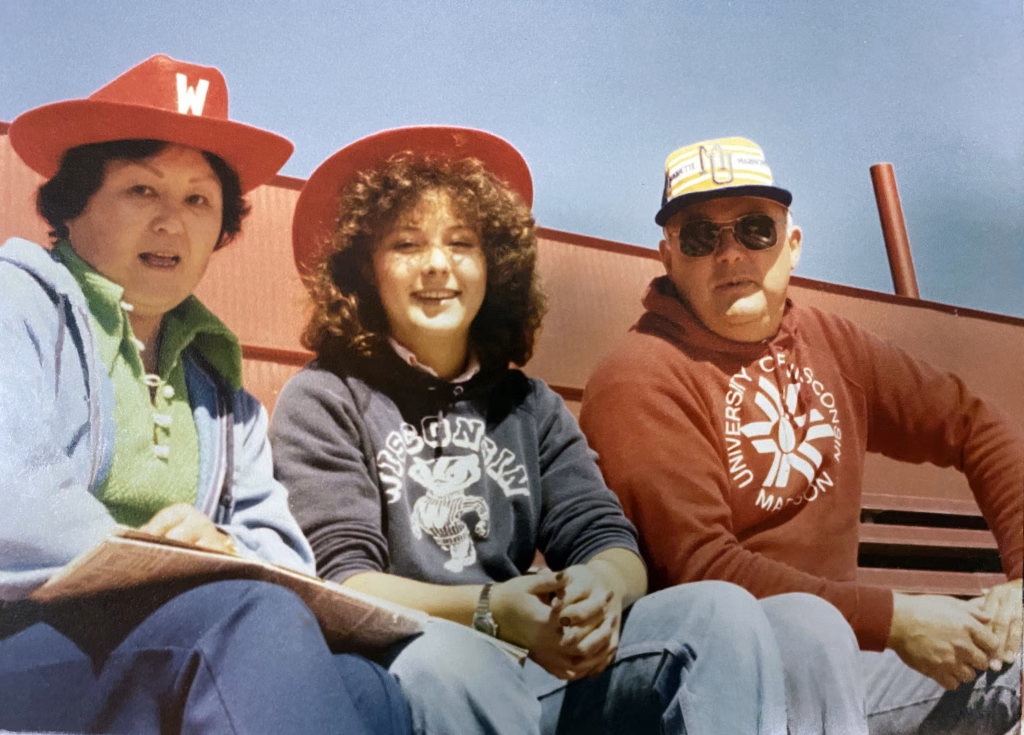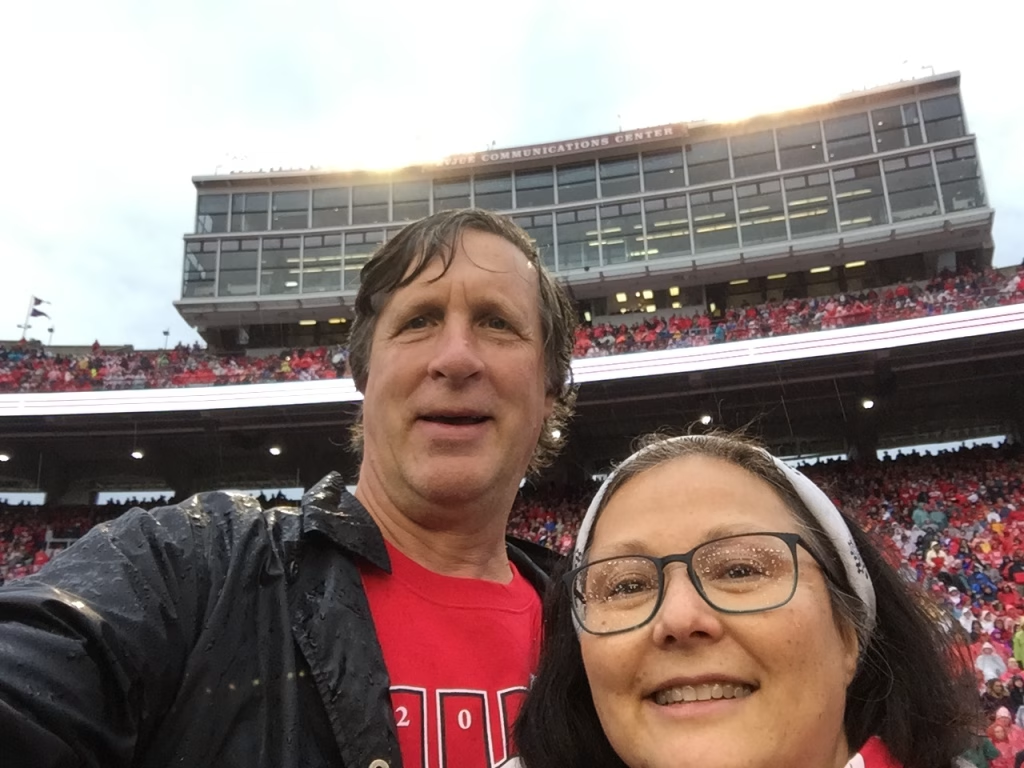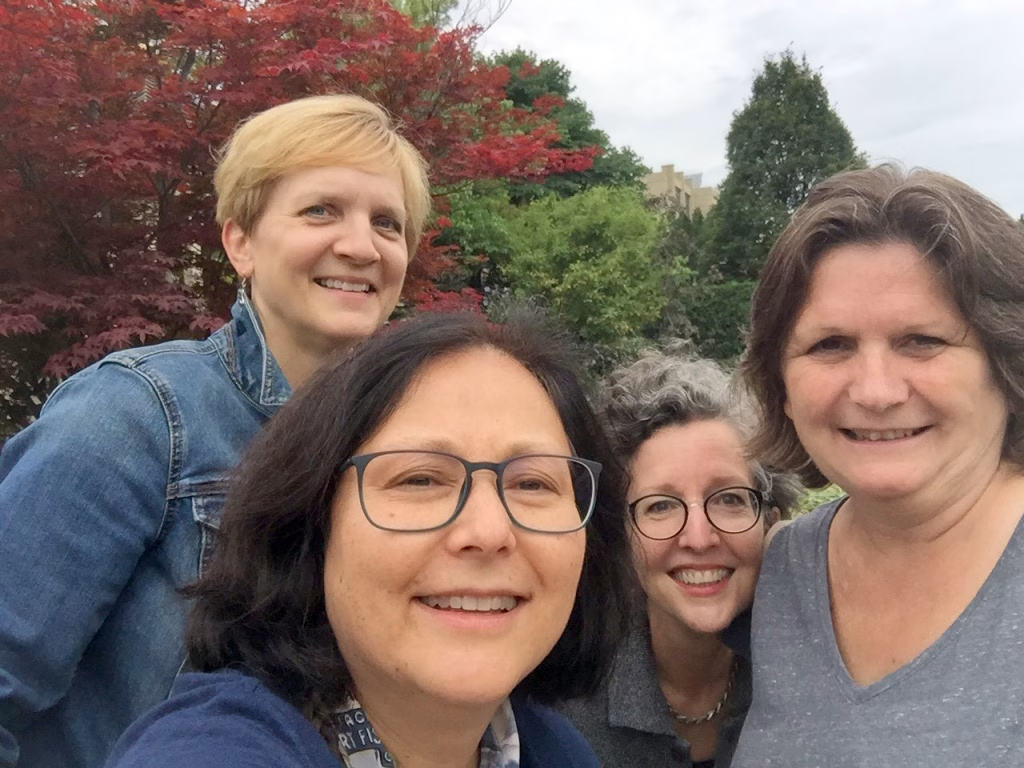Mary Buckett took her education from UW-Madison and revolutionized transmission electron microscopy. From Chadbourne Hall to the laboratories in MS&E, Mary found community on campus. She later went on to impact the materials science industry at 3M and beyond. When looking back at her remarkable legacy, she is proud that she chose to be a Badger and hopes the story of her fulfilling career will inspire aspiring engineers to consider materials science and engineering as a major.
Growing up two-and-a-half hours north of Madison in Merrill, Wisconsin, Mary Buckett loved science. When thinking about life after graduation and where she wanted to further her education, Mary’s high school chemistry teacher suggested that she pursue a degree in chemical engineering. Three factors led her to UW-Madison: A top-ranked chemical engineering program, affordable tuition and an acceptable distance from home.
Yet what Mary found at UW-Madison was much greater than she imagined. Not only did she meet her husband and some of her lifelong friends, but she also transitioned from the Department of Chemical and Biological Engineering into the Department of Materials Science and Engineering—a decision she says catapulted her into her career.
 Mary Buckett with her parents, Kazuko and Pat, at a football game in 1978.
Mary Buckett with her parents, Kazuko and Pat, at a football game in 1978.
Mary’s success story of determination, selflessness and passion, despite the challenges, highlights the opportunities an engineering degree from UW-Madison provides. Not only has she made contributions to transmission electron microscopy, but she has also personally impacted people at UW-Madison, 3M and beyond.
And her journey as an engineer all started the day she moved into Chadbourne Hall.
Being a Badger
When Mary moved into the third floor of the then all-female residence hall in 1979, she found meaningful friendships with Gail (Trubshaw) Ryan (mechanical engineering), Wendy Sebranek (industrial engineering) and Lynn (Leiske) Kopp (industrial engineering). Tongue-in-cheek, they referred to themselves as the “Beauty Wing.” Alongside these three female engineers, Mary found community.
“We became best buddies as we navigated through the prerequisite math, physics, and chemistry courses in the engineering curriculum,” she says. “We had a unique camaraderie being in the female minority of engineering students.”
Doing homework and living daily life together, the four formed an unbreakable bond. To this day, they still get together, sharing new stories and reliving their glory days.
“Those are the types of friends where even if you haven’t seen them in years, you pick up right where you left off,” Gail Ryan says.
At UW-Madison, Mary also met her husband: Norm Tiedemann, an electrical and computer engineering major.
A UW-Madison marching band super-fan, Mary was seeking tickets for the upcoming, spring band concert. Mutual friends mentioned that Norm played trumpet in the band and would be able to sell her tickets. Little did Mary know when she went to pick up the tickets she would be meeting her husband.
The couple married in June 1985. They later had their three daughters: Kelly, and twins, Natalie and Daniela. Natalie passed away from a brain tumor in 2005. After her passing, Mary and Norm continued to make UW-Madison traditions a family priority, taking Kelly and Daniela to football games and alumni band reunions.
Impacting the industry
Beyond the remarkable relationships she formed on campus, Mary says her time in MS&E laid the foundation for her engineering career. After graduating from UW-Madison in 1982, she earned her PhD in materials science and engineering from Northwestern University; was a fellow with the National Science Foundation at the National Research Institute for Metals in Tsukuba, Japan; did postdoctoral work in the interface studies group in the materials science division of the Argonne National Laboratory in Argonne, Illinois; and landed her dream job at 3M in St. Paul, Minnesota, where she has worked for the past 30 years.
While Mary was first introduced to transmission electron microscopy (TEM) in Professor David Larbalestier’s research group as an undergraduate at UW-Madison, she went on to revolutionize TEM at 3M and beyond. As a microscopy technique, TEM uses a beam of electrons to magnify a material’s microscopic structure, in turn helping create stronger materials.
 Norm and Mary at a UW football game
Norm and Mary at a UW football game
“She wouldn’t have said this, but she is relatively well known in the TEM industry for what she does,” Norm says. “Not just at 3M, but at conferences and other professional events too.”
One of Mary’s colleagues, Matt Atkinson, noted her contributions to TEM also. Mary was one of the first people Matt met at 3M 29 years ago, when they were in the same work group. Even though the two have transitioned into different roles at 3M since, they have remained good friends.
Matt says since Mary started her career at 3M in 1994, she has made a phenomenal impact. Not only does she have 13 U.S. patents, but she also has patents in China, Germany, Japan, India, Singapore and Korea. It is equally important to note that these patents are across multiple research areas, including lithium-ion batteries, nanoparticles, nanocomposites, plasmonic films, and membranes.
“Some people spend their entire career on just one area,” Matt says. “The fact that she knows enough material science to even handle these things is remarkable.”
Yet these outstanding accomplishments did not come without their challenges, especially in the early phases of Mary’s career. As a female in a male-dominated industry, Mary recalls times at UW-Madison where she was the only woman in the classroom, where women’s bathrooms were scarce in multistory engineering buildings in Japan, where respect for her capabilities (often doubted at first) took time, hard work and patience to earn.
Looking back on these moments, she has some advice for engineers entering the workforce: “Humbly but firmly own what you know,” she says. “My husband has had to remind me of this my whole career.”
Norm says he first saw Mary minimizing her knowledge in little moments, like if she was doing a crossword puzzle. Instead of saying “I know the answer,” he says that she would say, “I think the answer could be this.”
Now she has switched her language. By actively taking credit for her accomplishments, both at home with crossword puzzles and in the workplace with projects, Mary has more effectively taken ownership of who she is and what she stands for.
Leaving a legacy
When asked what Mary’s legacy will be, her friends, family and colleagues highlight the impact Mary has made—not only on TEM and materials science but on the people and community around her.
“She’s certainly not one-dimensional,” Gail says. “She’s always been able to strike the right balance, managing to be a good mother, wife, friend and daughter.”
Whether at work or at home, Mary has also prioritized giving back.
In her community, she ran Bill’s Pantry INC, an organization that delivered food to people in need living with HIV and AIDS. She also organized a group to knit hundreds of mittens for people experiencing homelessness in St. Paul. These days she’s involved in the onboarding of refugees, particularly sponsoring and befriending a family from Rwanda that she’s actively supported since 2015.
In the UW-Madison community, she has continually supported MS&E through regular donations and a STAR Scholarship. In her job, she has mentored many young people, including Maria Vratsanos.
One of 3M’s Senior Research Engineers, Maria recently joined Mary’s TEM Lab. While Maria continues to learn in her role, she says Mary has been a huge support since day one.
“She has been a fantastic mentor,” Maria says. “I know I can go to her with any questions, no matter how small.”
Looking toward retirement, Mary finds confidence in the next generation, in people like Maria. In this next chapter of life, she says giving back to young people and her community will continue to be a priority. Spending time with her girls, judging Lego Robotics competitions, attending Badger football games and continuing to support MS&E through the STAR Scholarship are all on her future agenda.
And as she reflects upon her career and all the places it has taken her, she thinks back on where it all started—in MS&E at UW-Madison.
“Twenty years ago, I wasn’t in this place. I didn’t have the resources to lead in this way,” Mary says. “But, now that I am able, I hope that I can—in some small measure—influence others in a positive way by example.”
 Friends reunited in Madison in 2019. From left to right: Gail Ryan, Mary Buckett, Wendy Sebranek and Lynn Kopp
Friends reunited in Madison in 2019. From left to right: Gail Ryan, Mary Buckett, Wendy Sebranek and Lynn Kopp